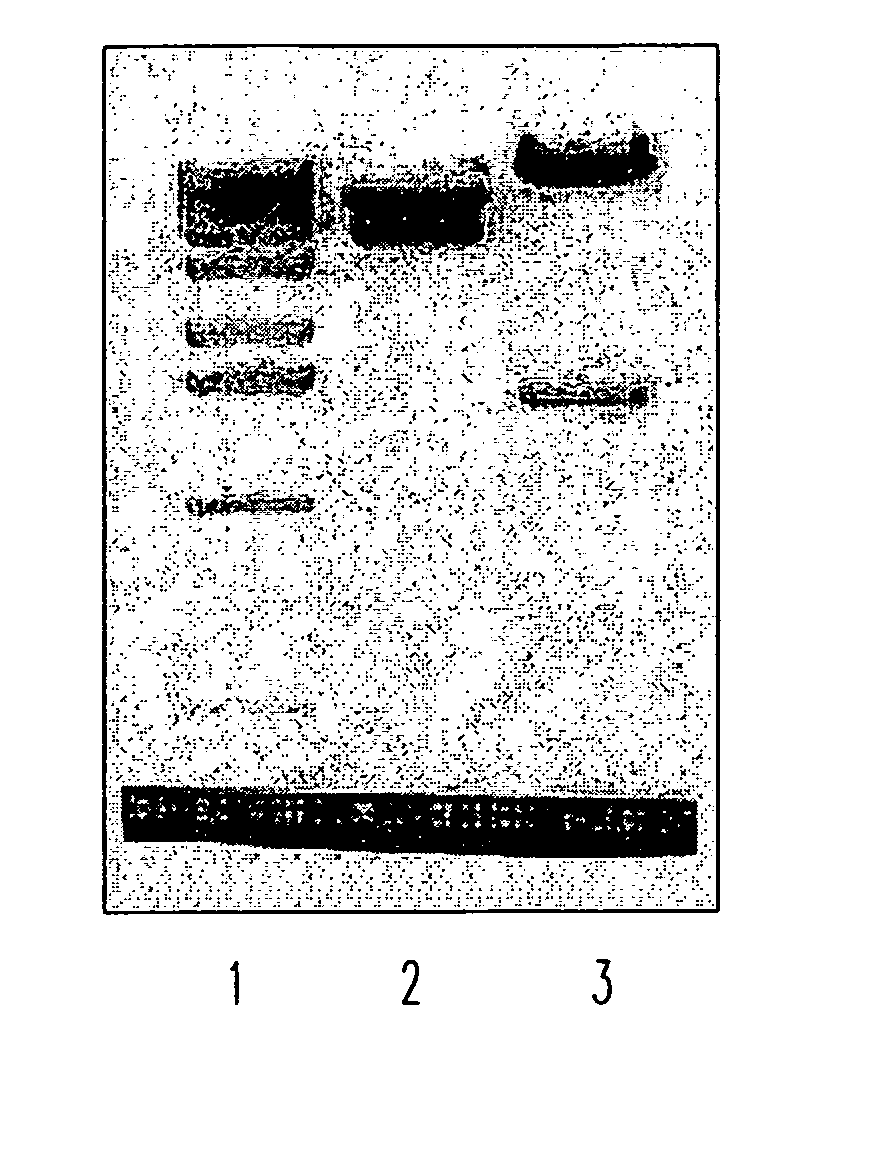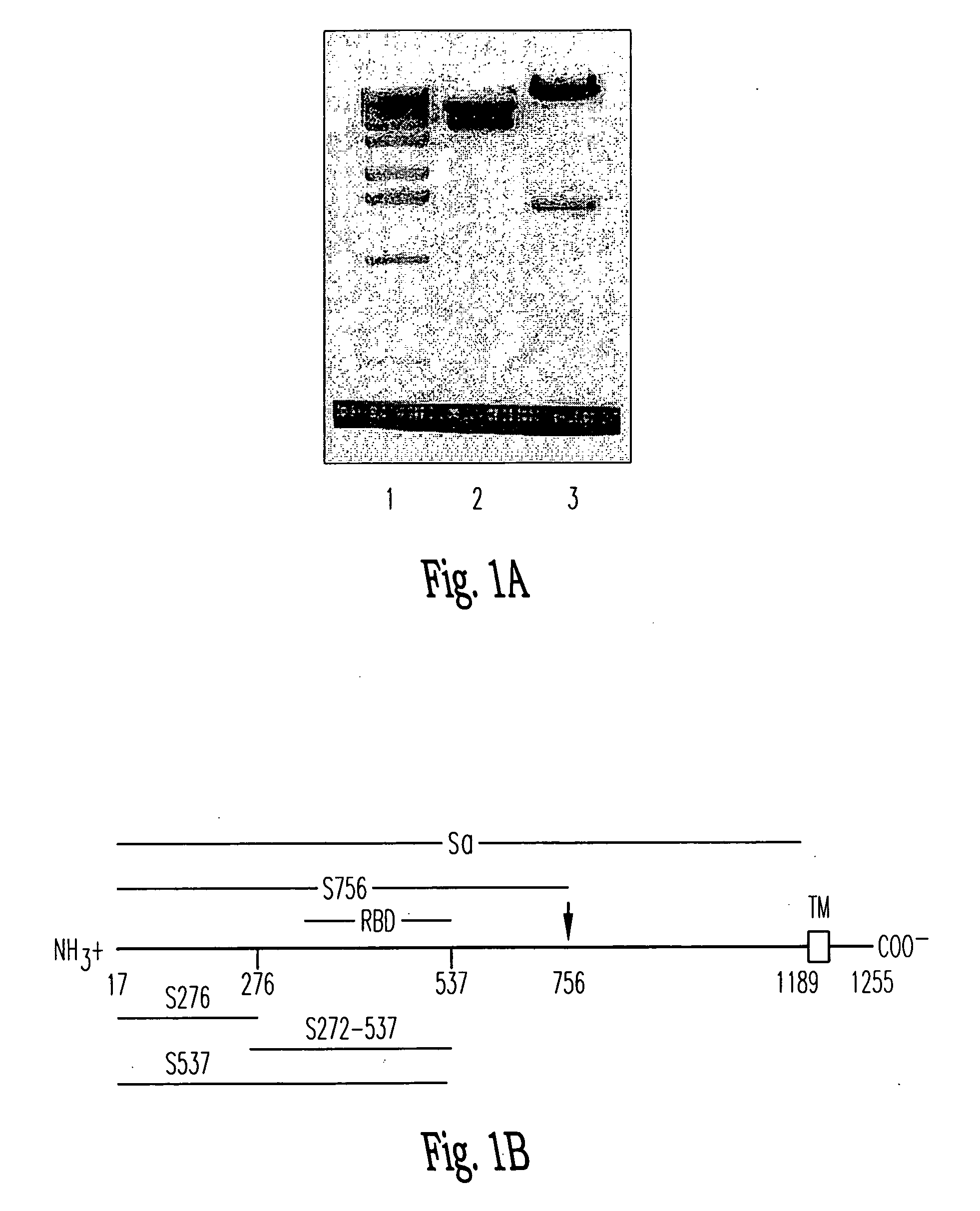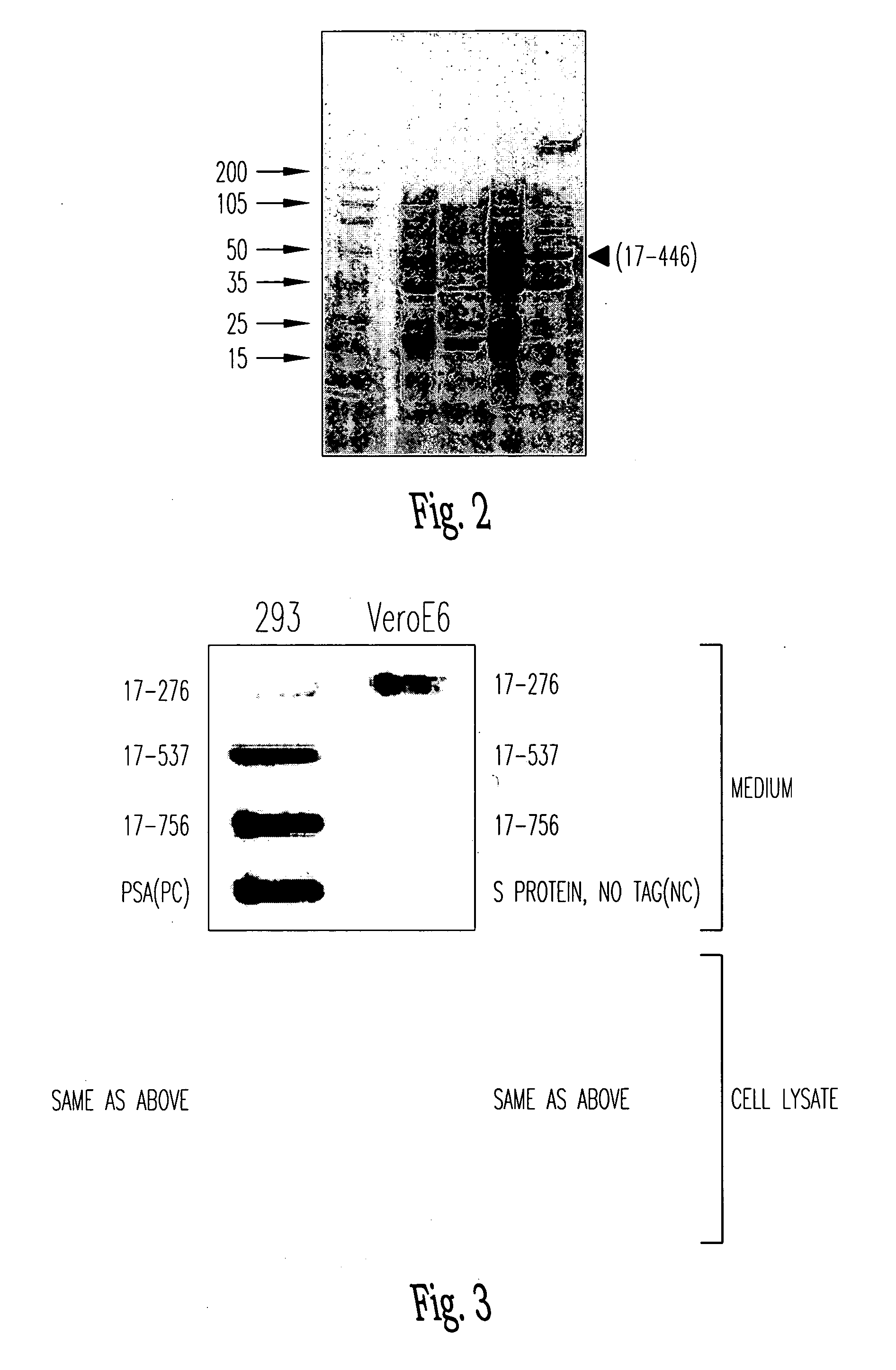Soluble fragments of the SARS-CoV spike glycoprotein
a technology of sars-cov and spike glycoprotein, which is applied in the field of soluble fragments of sars-cov spike glycoprotein, can solve the problems that sars-cov presents a particular threat to the health of large populations of people throughout the world, and achieve the effect of preventing sars-cov
- Summary
- Abstract
- Description
- Claims
- Application Information
AI Technical Summary
Benefits of technology
Problems solved by technology
Method used
Image
Examples
example 1
Cloning of the Spike Protein
[0137] The nucleic acid sequence encoding the full length spike protein was obtained through use of overlapping polymerase chain reaction (PCR). Overlapping clones containing fragments of the spike protein were obtained from the British Columbia Cancer Agency (Vancouver, British Columbia). The following primers were used during the PCR reactions to amplify the nucleic acid sequence encoding the full-length spike protein of SARS-CoV: Clone 1: Forward primer: 5′-A GTC GGA TCC GGT AGG CTT ATC ATT AGA G-3′ (SEQ ID NO: 3); Reverse primer: 5′-CCA TCA GGG GAG AAA GGC AC-3 (SEQ ID NO: 4). Clone 2: Forward primer: 5′-GTG CCT TTC TCC CCT GAT GG-3′ (SEQ ID NO: 5); Reverse primer: 5′-GAA GAG CAG CGC CAG CAC C-3′ (SEQ ID NO: 6). Clone 3: Forward primer: 5′-GGT GCT GGC GCT GCT CTT C-3′ (SEQ ID NO: 7); Reverse primer: 5′-A CTG TCT AGA GTT CGT TTA TGT GTA ATG-3 (SEQ ID NO: 8).
[0138] The nucleic acid segment that resulted from overlapping PCR between the nucleic acid se...
example 2
Generation of Amino-Terminal (S1) and Carboxyl-Terminal (S2) Fragments of the Full Length Spike Protein
[0140] Computer analysis identified a potential functional separation site between the amino-terminus (S1) and the carboxyl-terminus (S2) of the spike protein. The separation site between S 1 and S2 is between positions between 758 and 761 (758RNTR761) relative to SEQ ID NO: 1. PCR was used to create nucleic acids that code for the amino-terminal fragment (S1), and the carboxyl-terminal fragment (S2) of the spike protein.
[0141] The following primers, S1 forward primer 5′-AGTC GGA TCC GAC CGG TGC ACC ACT TTT G-3′ (SEQ ID NO: 9), and the reverse primer, S1 Reverse primer: 5′-AGTC GGG CCC CTG TTC AGC AGC AAT ACC-3′ (SEQ ID NO: 10), were used to prepare a nucleic acid segment coding for amino acid residues 17-757 of the spike protein. Two restriction sites, BamHI and ApaI, underlined in the two primers were used to clone the nucleic acid segment coding for the amino-terminal fragment...
example 3
Generation of the Whole Soluble Spike Protein (sS) Lacking the Cytoplasmic Tail and the Transmembrane Domain
[0145] The following pair of primers were used to generate a nucleic acid segment encoding a fragment of the spike protein (sS) lacking the cytoplasmic tail having amino acids 17-1189 of SEQ ID NO: 1: S1 Forward: 5′-AGTC GGATCC GAC CGG TGC ACC ACT TTT G-3′ (SEQ ID NO: 9), and Reverse: 5′ ACTG TCTAGA TTG CTC ATA TTT TCC C-3′ (SEQ ID NO: 12).
PUM
| Property | Measurement | Unit |
|---|---|---|
| diameter | aaaaa | aaaaa |
| molecular weights | aaaaa | aaaaa |
| molecular weights | aaaaa | aaaaa |
Abstract
Description
Claims
Application Information
 Login to View More
Login to View More - R&D
- Intellectual Property
- Life Sciences
- Materials
- Tech Scout
- Unparalleled Data Quality
- Higher Quality Content
- 60% Fewer Hallucinations
Browse by: Latest US Patents, China's latest patents, Technical Efficacy Thesaurus, Application Domain, Technology Topic, Popular Technical Reports.
© 2025 PatSnap. All rights reserved.Legal|Privacy policy|Modern Slavery Act Transparency Statement|Sitemap|About US| Contact US: help@patsnap.com



